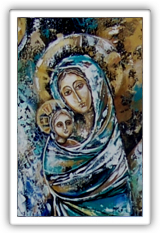|
|
Comprehending Medjugorje : Original Documents And Conversations with Arnaud Dumouch
The influence of Satan
Reference (French Edition) :
Daria Klanac, Comprendre Medjugorje : Regard historique et théologique, avec la collaboration du théologien Arnaud Dumouch, Informativni centar Mir, Medjugorje, en coédition avec les Éditions Sakramento, Paris, 2012, 2e éd. (1re éd. 2008, ISBN 978-2-915380-19-4 & 978-9958-36017-6), entretien avec le théologien Arnaud Dumouch, pages 161 à 164.
English Translation by Duško Čondić
The influence of Satan
Daria Klanac : When asked: “Who are you? What is your name?” (the fourth day of apparition), the Virgin responded: “I am the Blessed Virgin Mary.” Would God permit that the Evil Spirit represent himself in the person of the Mother of God through so long a period of time, or that he urge people to convert and pray?
Arnaud Dumouch : There are three suppositions in this instance that this is not from Heaven:
1. We could imagine that the Demon prepared such a long-termed fabrication that in the end will prove to be laughable. However, the nature of some conversions, the sincere return to loyalty to the Church, and miracles will make that supposition untenable as based on the words of Jesus, (Lk 11:18), “If, then, Satan is divided against himself, how, then, shall his kingdom stand?”
2. One could, purely from the human point of view, imagine that its origins are a fraud. Naturally, this would be difficult to maintain over a twenty-eight year span. Presuming such a fraud, we can imagine that one of the perpetrators of that fraud would soon break the secret because of pangs of conscience.
3. One could also imagine that the apparitions have a purely and sincerely human origin (hallucinations): this, too, is untenable. Those children are clearly healthy of mind. In any event, and so as to completely put aside such suppositions, the miracles must be verified which, in the end, serve as the only means to arrive at a final judgement. Namely, we have already seen that false visionaries imitate the first criterion (consistency with Catholic dogma), and that the second criterion is partially present (spiritual fruits), since the Holy Ghost is present wherever good will is present among the faithful.
D. Klanac : Some are of the mind that the true apparitions only took place the first ten days.[31] Are the visionaries, then, under the influence of some sort of dishonorable possession? Are they engaged in some sort of comedy? Can such persons undergo real apparitions for the first eleven days and subsequently false apparitions through so many years?
A. Dumouch : As interesting as that supposition is, it is also impossible. If those children did see the Virgin and then subsequently lied, their conscience would bother them all the more. Let us return to another comparison. Following the cessation of the apparitions in Lourdes, and after their recognition by the Church, doubts overtook Bernadette. This was one sort of “night of the soul,”—doubts sent, no doubt, by God so that she would be detached from herself. She said to her superiors: “And, if I saw nothing? And, if I lied?” Her superiors turned her away from such thoughts by reminding her of the objective criteria used to judge the apparitions. In the meantime, we can see that Bernadette, who truly saw the Virgin, became incapable of deceiving. The same would be the case with the children from Medjugorje.
D. Klanac : In several of her messages from Medjugorje, the Virgin said that Satan constantly endeavors to thwart her plans. Are we sufficiently aware of the importance of those messages? Or, how those words resonate in the ears of our contemporaries who no longer believe in the existence of the Adversary?
A. Dumouch : If the apparitions in Medjugorje are true, we can say that God, as never before, allowed the Demon to agitate and thwart against them—as though everything is surrounded by conflict, passions, and unrest. Those “permissions” come from God since they are aimed to create humble hearts. So as to create an image of the richness of the lessons which will, in the future, be drawn from them by theologians if the apparitions are approved, it is sufficient for us to see what the life, battles, and sufferings of Joan of Arc were— to see a noble image of the life, battles and sufferings in the future of the Church.
31. Cf. Supplement IV of the French edition. [↩]
